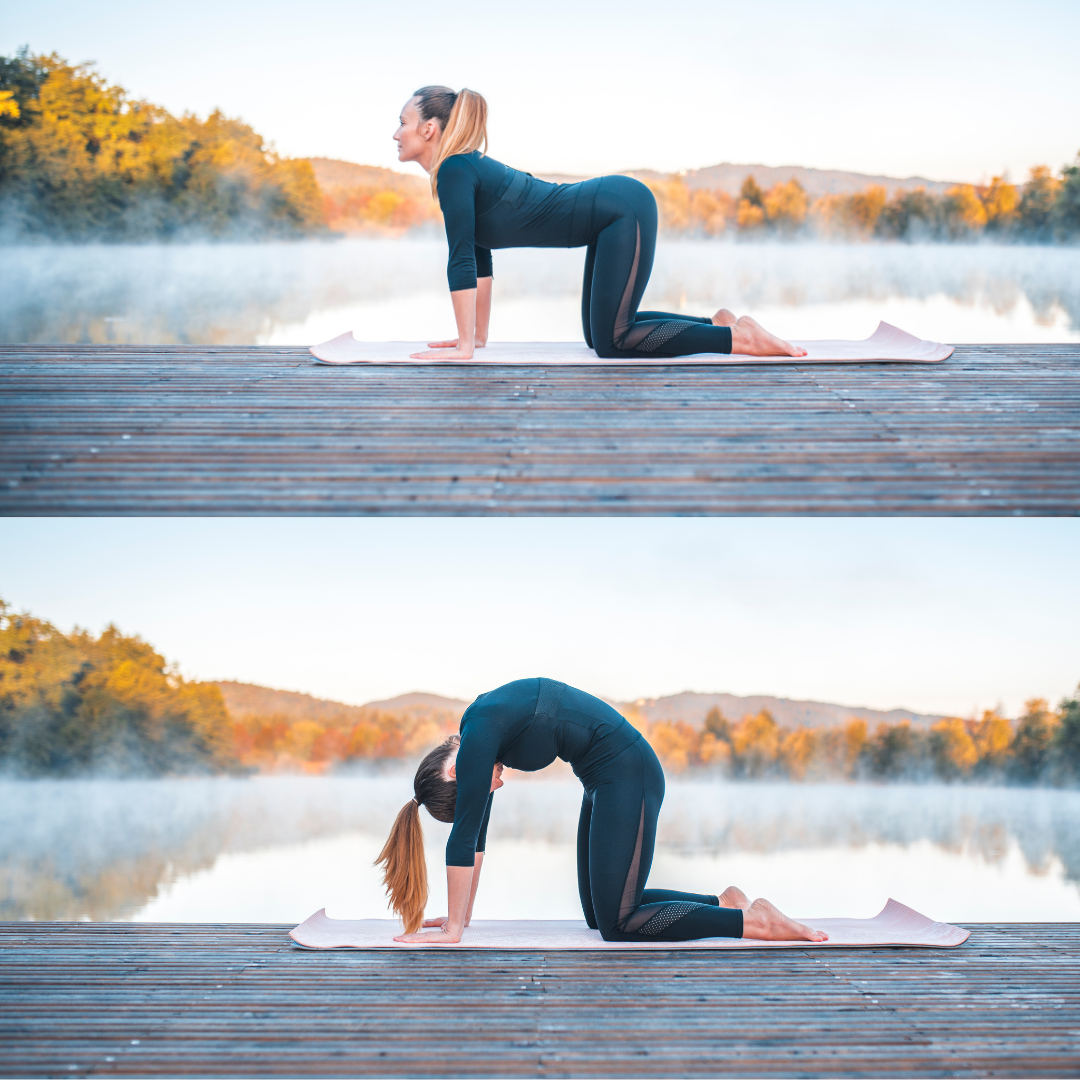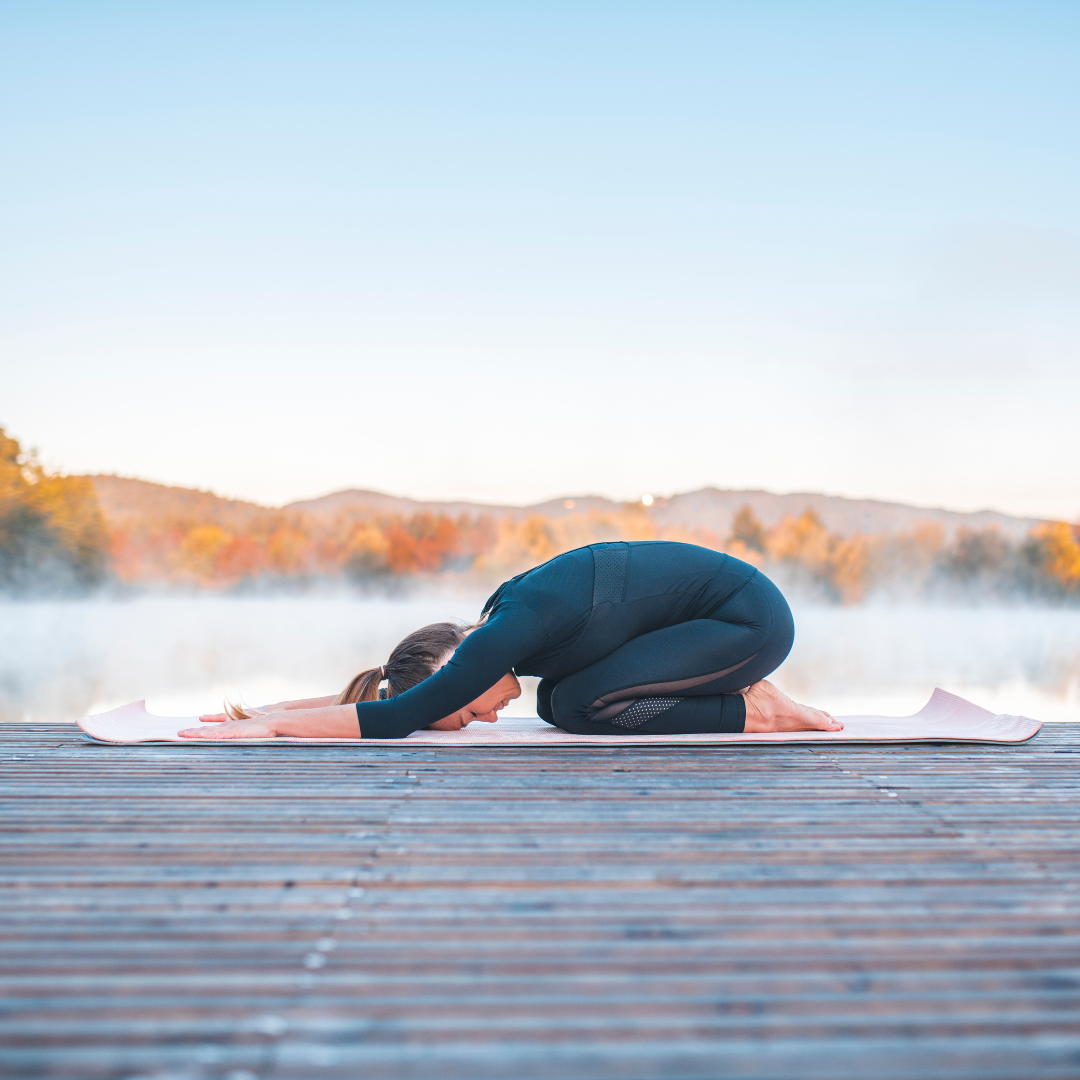|
By Colette Corr We know that motion is lotion, but how do we best support our lower back when feeling pain there? This pain could be caused by injury to a muscle (strain) or ligament (sprain), for example from improper lifting, poor posture, or lack of regular exercise. Other causes that might require more support include radiculopathy (a pinched nerve), arthritis or disc injury. While it’s important to get a diagnosis for certain conditions, remember that many types of lower back pain go away on its own in two to four weeks. Here are some stretches to help increase blood flow to the area, and soothe tight muscles and connective tissue. Yoga has also been associated with improved body awareness and resilience, including pain acceptance and coping. The yoga you do for your lower back will depend on whether the pain you experience there is triggered by flexion (folding forward) or extension (bending back). If folding forward triggers the pain, then focus on extension (Sphinx, Locust). Or if bending back is the issue, then focus on flexion (Child’s Pose). The first two exercises, Mountain and Cat/Cow, can be done by anyone. 1. Extend the spine in Mountain (Tadasana) This is good for any back, as back pain can frequently be associated with certain structures in the spine being too close to each other. Stand with your feet stacked underneath your hips, your arms by your sides a little way away from the body and palms facing the front, or choose to press your palms together at the chest. Have a little softness at the knees, draw your shoulder blades back and down, open up the chest, and visualise your spine lengthening. You can also practice this pose while sitting, if standing is not comfortable for you. Benefits: this pose improves balance, posture and awareness of your body in space (proprioception). It also increases space between each vertebrae through vertebral extension, mobilises your spine, and stimulates the nervous system. 2. Mobilise the spine with Cat/Cow Start in a kneeling position (also known as Table Top) and stack wrists under shoulders and knees under hips. With the inhale, tilt your pelvis away from the ground, and open up your chest and neck (Cow). With the exhale, tuck your pelvis in, arch your back, and bring your chin closer to your chest (Cat). Repeat 10 times. There’s no need to go to the end of your range of motion: just undulate your spine and with the breath and enjoy the feeling of movement. You can also practice this pose while sitting. Benefits: this gentle, accessible backbend stretches and mobilises your spine and spinal muscles. It also stretches your torso, shoulders, and neck. Caution: If either Cat or Cow aggravate your lower back, you can practice Table Top to Cat, or Cow to Table Top instead. 3. Extend the spine in Sphinx pose Lie on your belly, legs side by side, tailbone gently tucked, and glutes firm but not clenched. Stack your elbows under your shoulders and your forearms on the floor parallel to each other. Inhale and lift your upper torso and head away from the floor into a mild backbend. Take a few breaths here, then, then slowly lower your torso and head to the floor. Benefits: strengthens the spine, promotes natural curvature of the lower back (which can be flattened by prolonged sitting), and stretches chest, lungs, shoulders, and abdomen. Caution: Listen to your body. If you start to feel pain coming into the pose, this is where you stop. You can pause at the threshold before the pain begins, or you can discontinue the pose. Avoid if you have facet joint injury. 4. Strengthen the core with Half Locust If Sphinx is comfortable for you, you can take it further with Half Locust. Start on your belly, legs parallel and ideally together, and reach your hands back, palms down. Broaden your collarbone and draw the shoulder blades back and down. Inhale and engage your abs, which will lift your belly lift towards your spine. Then, activate your inner thighs. With the exhale, gently squeeze your glutes to lift your legs off the ground and keep them there as you breath. Take 3 long, slow breaths, and lower on the last exhale. If comfortable in Half Locust, you can come to full Locust but lifting the upper body up into a Sphinx-like shape, but keeping your palms by your side. Only do this if you can keep the glutes and core engaged at the same time. Benefits: works glutes and abdominals, tones thoracic spine. Caution: as for Sphinx. 5. Flex the spine with Child’s Pose From Table Top, on the exhale, draw the buttocks back towards the heels. For additional comfort, you can do so over a lengthened bolster. Benefits: This pose improves spinal flexibility, relieves stress and improves circulation to the back. These yoga poses are generally safe for most people to enjoy for stretching out the lower back. As with any new exercise, if you are already having significant pain, please book a time to see one of our team for assessment and treatment, and we can advise you on the most appropriate exercises for your current condition, and guide you through any safe modifications to these exercises.
Comments are closed.
|
Meet Our Team
We have a team of great practitioners available 7 days a week at our Rowville clinic. Archives
July 2024
Categories
All
|
Got a question about Myotherapy?
Contact Mel by phone, email or Facebook
|
Simple Wellness Myotherapy & Remedial Massage Clinic
Shop 12B 150 Kelletts Rd Rowville VIC 3178 |
Phone us on
03 8204 0970 |






 RSS Feed
RSS Feed